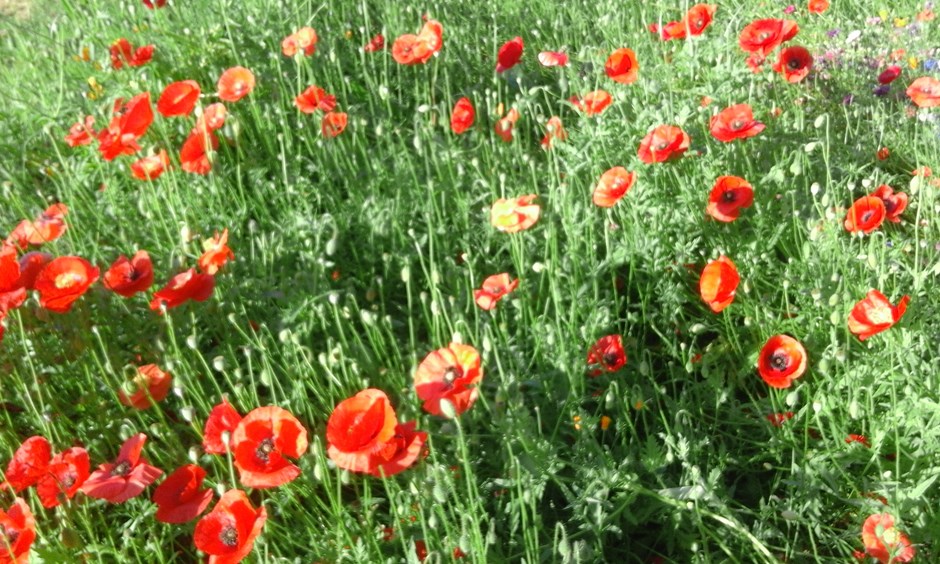Grassland Strategy 2023-2033
<div class='container-fluid container--no-background'>
 </div>
</div>
We regularly monitor and evaluate our grasslands. Monitoring also helps to understand the effects of our management against targets set in plans such as the Climate Emergency Strategy and Leicester Biodiversity Action Plan. It allows us to make changes needed to enhance biodiversity, store carbon, and maximise benefits associated with grasslands.
The added pressures of climate change with a longer growing season, invasive native and non-native species, and periodic flooding and/or drought conditions mean that we have to regularly review our grasslands to see if the current management practices are still appropriate and if we have to change them.
Depending on the classification of the site reviews take place every one or two years and is undertaken internally by Parks, Leicester Environmental Volunteers, and Nature Conservation officers, we may also commission external support from organisations.
We look at various different criteria when reviewing a site such as:
Botanical Diversity
To determine the quality and status of the area based on the diversity of native/non-native wildflower species and meadow grasses. The sites are also assessed for the presence of indicators of high fertility, that is, presence of invasive native species such as docks, thistles and nettles; and signs of poor management such as the presence of self-set trees and shrubs, encroachment of scrub, and areas of bare earth.
The flowering/blossom season is also measured as an indicator, particularly where non-native species are present to determine the length of season and flowering abundance.
In addition to the above indicators, grazing is also assessed by the amount of bare earth caused by poaching and over-grazing of livestock (too many livestock or site grazed for too long and at inappropriate time of year), sward height and number of latrines.
Variety of Pollinators
The Leicester Bee Road Project set up a monitoring programme with University of Leicester, Buglife and other volunteers to monitor the number of pollinating insects and the types of wildflowers they were attracted to. This monitoring also formed part of a larger Citizen-science project under the UK Pollinator Monitoring Scheme which aimed to establish how pollinator populations change over the UK using the Flower-Insect Timed Count (FIT Count).
Biodiversity Net Gain (BNG)
New developments often incur biodiversity loss within their design. Therefore we will survey and monitor the condition of sites and habitats that are enhanced or created to off-set biodiversity. All local authorities will be expected to report on site conditions and floristic diversity/habitat value and records will be available in the public domain. Any council-owned sites where off-setting is agreed will form part of that monitoring requirement.
The added pressures of climate change with a longer growing season, invasive native and non-native species, and periodic flooding and/or drought conditions mean that we have to regularly review our grasslands to see if the current management practices are still appropriate and if we have to change them.
Depending on the classification of the site reviews take place every one or two years and is undertaken internally by Parks, Leicester Environmental Volunteers, and Nature Conservation officers, we may also commission external support from organisations.
We look at various different criteria when reviewing a site such as:
Botanical Diversity
To determine the quality and status of the area based on the diversity of native/non-native wildflower species and meadow grasses. The sites are also assessed for the presence of indicators of high fertility, that is, presence of invasive native species such as docks, thistles and nettles; and signs of poor management such as the presence of self-set trees and shrubs, encroachment of scrub, and areas of bare earth.
The flowering/blossom season is also measured as an indicator, particularly where non-native species are present to determine the length of season and flowering abundance.
In addition to the above indicators, grazing is also assessed by the amount of bare earth caused by poaching and over-grazing of livestock (too many livestock or site grazed for too long and at inappropriate time of year), sward height and number of latrines.
Variety of Pollinators
The Leicester Bee Road Project set up a monitoring programme with University of Leicester, Buglife and other volunteers to monitor the number of pollinating insects and the types of wildflowers they were attracted to. This monitoring also formed part of a larger Citizen-science project under the UK Pollinator Monitoring Scheme which aimed to establish how pollinator populations change over the UK using the Flower-Insect Timed Count (FIT Count).
Biodiversity Net Gain (BNG)
New developments often incur biodiversity loss within their design. Therefore we will survey and monitor the condition of sites and habitats that are enhanced or created to off-set biodiversity. All local authorities will be expected to report on site conditions and floristic diversity/habitat value and records will be available in the public domain. Any council-owned sites where off-setting is agreed will form part of that monitoring requirement.
